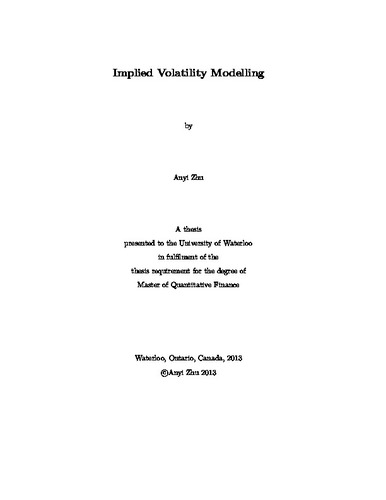| dc.contributor.author | Zhu, Anyi | |
| dc.date.accessioned | 2014-01-08 14:50:31 (GMT) | |
| dc.date.available | 2014-01-08 14:50:31 (GMT) | |
| dc.date.issued | 2014-01-08 | |
| dc.date.submitted | 2013 | |
| dc.identifier.uri | http://hdl.handle.net/10012/8126 | |
| dc.description.abstract | We propose extensions on calibrating the volatility surface through multi-factor regression models. The proposed models are back-tested against the historical S&P 500 prices during both the volatile and non-volatile periods (as indicated by the VIX index around the same period) and the relevant statistics (adjusted R2-statistics and root-mean-squared-error (RMSE) statistics) are used to assess the ts of the models. Furthermore,both the equal-weighted method and an alternative method by using observed implied volatilities as the weight are deployed and the results produced by the two methods are compared. Finally we also discuss the possibilities of using promptness, instead of time to maturity, in the regression model to better capture the shape of the volatility surface. | en |
| dc.language.iso | en | en |
| dc.publisher | University of Waterloo | en |
| dc.title | Implied Volatility Modelling | en |
| dc.type | Master Thesis | en |
| dc.pending | false | |
| dc.subject.program | Quantitative Finance | en |
| uws-etd.degree.department | Statistics and Actuarial Science | en |
| uws-etd.degree | Master of Quantitative Finance | en |
| uws.typeOfResource | Text | en |
| uws.peerReviewStatus | Unreviewed | en |
| uws.scholarLevel | Graduate | en |

